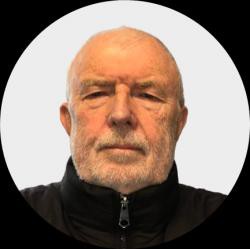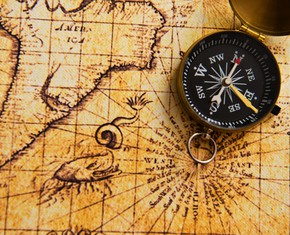The views expressed in our content reflect individual perspectives and do not represent the authoritative views of the Baha'i Faith.
How spiritually hungry are you? To dive deep in the spiritual ocean satisfies that hunger, which defines the difference between spiritual experience and writing or talking about spiritual experience.
RELATED: How to Feed Your Soul’s Hunger
Abdu’l-Baha, the son and successor of Baha’u’llah, the prophet and founder of the Baha’i Faith, said in a talk he gave in London:
Divine things are too deep to be expressed by common words. The heavenly teachings are expressed in parable in order to be understood and preserved for ages to come. When the spiritually minded dive deeply into the ocean of their meaning they bring to the surface the pearls of their inner significance.
That ocean is real, but merely talking about it is just signs, words, and concepts. You can’t quench your thirst with the word water, nor can you swim in words. Watch the face of a child if she wants an ice-cream, and then see how she reacts when you give her a two-dimensional picture of one.
Real life is lived in the now, and it is experiential. Right now, do you have the tools, attitudes and qualities to live life fully, to have the deep spiritual experiences we all want and need?
How We Have Mystical Experiences
Deep spiritual experience is just another name for mystical experience – for anything higher and more lofty that takes you out of your self and its limitations. A child’s smile, a beautiful landscape, a powerful work of art, the deep feeling of the heart for nobility and spiritual grace – all have the potential to help us transcend self.
Words alone won’t satisfy the longing for deep spirituality, and paying lip-service to spirituality is useless in helping us on our spiritual quest toward self-knowledge. Those illusions can cause us to get lost in a sealed maze of what Taoism and Zen calls the 10,000 things, referenced in the first verse of the Tao Te Ching:
The Tao that can be told is not the eternal Tao;
The name that can be named is not the eternal name.
The nameless is the beginning of heaven and earth.
The named is the mother of ten thousand things.
Taoism is a philosophical and spiritual tradition of Chinese origin which emphasizes living in harmony with “the Way.” Taoism might best be seen as a prototype of the mystical heart of the religions that have followed. Teaching a way of en-light-en-ment, Taoism brings light to the path we tread.
Baha’i author Professor Roland Faber has written a challenging paper entitled “Laozi: A Lost Prophet?” It explains that Taoism’s main text is the Tao Te Ching, translated more than 250 times. That venerable book has been called the way of integrity and the way to let go of the compulsive need to answer unanswerable questions.
The Chinese word “Tao” signifies “way,” “path,” “route,” “road,” or sometimes more loosely “doctrine.” The first chapter of the Tao Te Ching as translated by Stephen Mitchell says:
Naming is the origin
of all particular things.
Free from desire, you realize the mystery.
Caught in desire, you see only the manifestations.
Yet mystery and manifestations
arise from the same source.
Ron Hogan’s helpful everyday language version starts with; “If you can talk about it, it ain’t Tao.”
Those who follow the Tao believe that we all need to live life with a permanent connection to the nondual realm. That connection can, in this dual, material world, transform the myriad “ten thousand things” as we begin to see them into signs that guide the way to the ineffable non-dual realm, like fingers pointing to the moon. Then we can say, “Now I see this dual world more clearly.”
For many of us, this everyday world is wrongly called the “real” world. But as the Baha’i teachings say:
… the world is like the vapor in a desert, which the thirsty dreameth to be water and striveth after it with all his might, until when he cometh unto it, he findeth it to be mere illusion. It may, moreover, be likened unto the lifeless image of the beloved whom the lover hath sought and found, in the end, after long search and to his utmost regret, to be such as cannot “fatten nor appease his hunger.”
Baha’u’llah, and the Tao Te Ching, both described the physical world as illusory because it has no permanence. All physical and material existence is subject to birth and death, existence and non-existence – and is therefore not everlasting. Only the world of the spirit truly lasts. Only that which is ineffable, that is un-speak-able, is the eternally real.
RELATED: For Those Who Seek Nirvana, Did the Buddha Teach Atheism?
So when we start to name things we make differences, distinctions, dualities, comparisons, categorizations, and judgments. We bring focus to particular things to show them in contrast to their background or context. However, the ultimate context from which things arise is no-thing – also called “darkness” in Taoism, meaning the non-dual or God manifest in creation.
Overcoming the Desire for Things
The desire for things signifies one of the most difficult challenges we have in this dualistic world. It prevents many people from awakening to the awareness of their true self. The more we are free from material desire, the more we can tune in to the nondual. Trapped in desire, we can become slaves to material things or to false, cosmetic versions of the “I” in “I-am.” For the Taoist, this trap defines failure in the quest for deep spirituality.
In the Tao Te Ching, the darkness within darkness defines the no-thing that is the source of all things – the source for gnostic or Irfan-ic knowledge. This we receive by the grace of God, through the sequence and succession of His messengers. In his writings Baha’u’llah gave us virtually the same spiritual guidance:
The signs of God shine as manifest and resplendent as the sun amidst the works of His creatures. Whatsoever proceedeth from Him is apart, and will always remain distinguished, from the inventions of men. From the Source of His knowledge countless Luminaries of learning and wisdom have risen, and out of the Paradise of His Pen the breath of the All-Merciful hath continually been wafted to the hearts and souls of men. Happy are they that have recognized this truth.
The roots of Taoism go back at least to the 4th century BCE. Taoist ethics vary, but in general they tend to emphasize wu wei – action without intention, “naturalness,” simplicity, spontaneity, and what the Tao Te Ching calls “the Three Treasures:” 慈, “compassion”, 儉, “frugality” and 不敢為天下先, “humility.”
Go deep into your heart to find these essential human attributes, including the “dual-non-dual” reality of our earthly lives. In spirituality, non-duality, means “not two” or “one undivided without a second.” It primarily refers to a mature state of consciousness, in which the dichotomy of I-other is “transcended”, and awareness is described as “centerless” and “without dichotomies.”
While the term non-duality is derived from Advaita Vedanta, descriptions of nondual consciousness can be found within all major religious and spiritual traditions – though they are often neglected. Nonduality in Taoism is seen as “one unified whole that originates all the elements of the universe.” Currently, since The Age of Enlightenment, scientific materialism rules – but mystical truth has a much longer pedigree than scientific truth. Meister Eckhart, Rumi and many others agree that theologians may quarrel but the mystics of the world agree.
With a non-dual approach to life, what enables the light to come on? When we quiet the egotistic self, it allows deep spiritual experiences to generate insights into the world and into the self. Always, forms of spiritual and devotional practice precede what many describe as an experience by “the grace of God.” Practices like prayer and meditation help keep us in a state of readiness and sensitivity while they deepen our sensibilities. We can’t demand such experiences, but can only ready our souls and welcome them when they come.
From a Taoist perspective, the recognition of no-thing makes clear a relationship with the infinite Mystery, the unknowable Godhead. The hyphen in no-thing also reminds us of the mark on our gravestone – that telltale dash between our birth-date and our death-date.
You too can add the Tao Te Ching as a guide to your deeper experience, to gain sufficient self-knowledge to become your true self. Remember, “The tao that can be told is not the eternal Tao, the name that can be named is not the eternal Name …”
















Comments
Sign in or create an account
Continue with Googleor